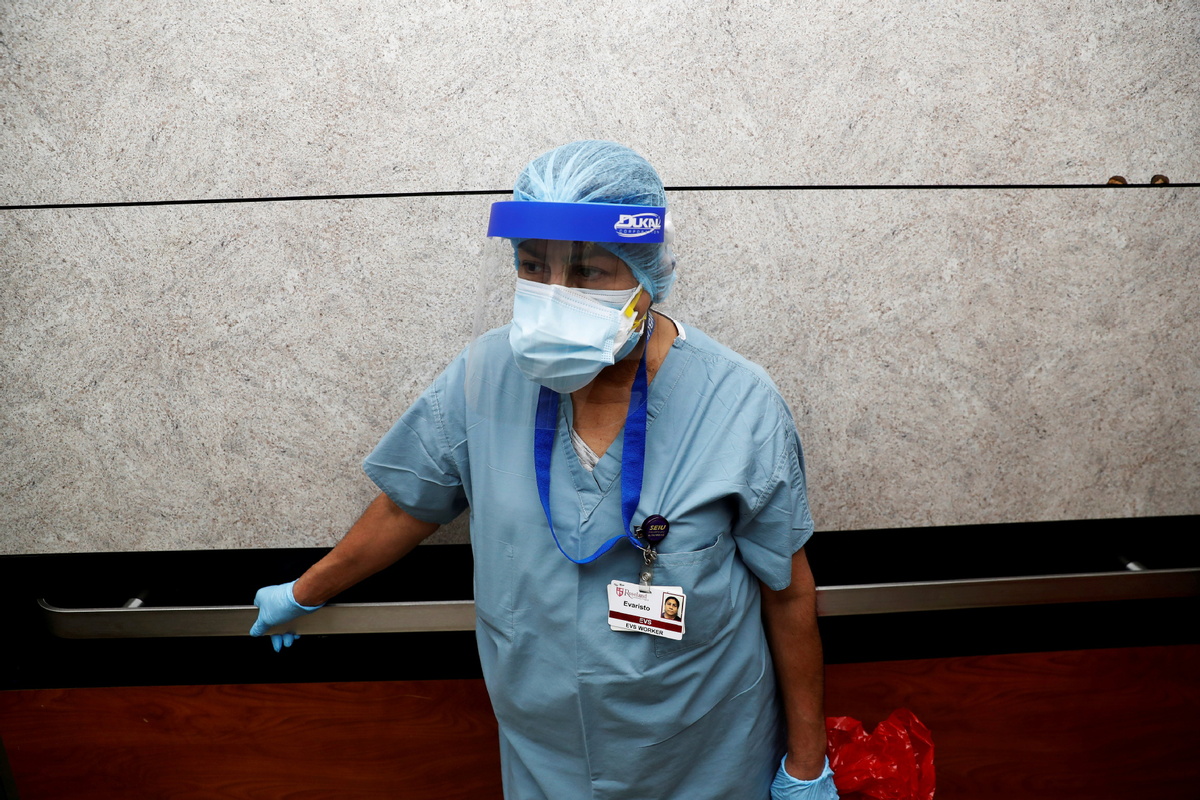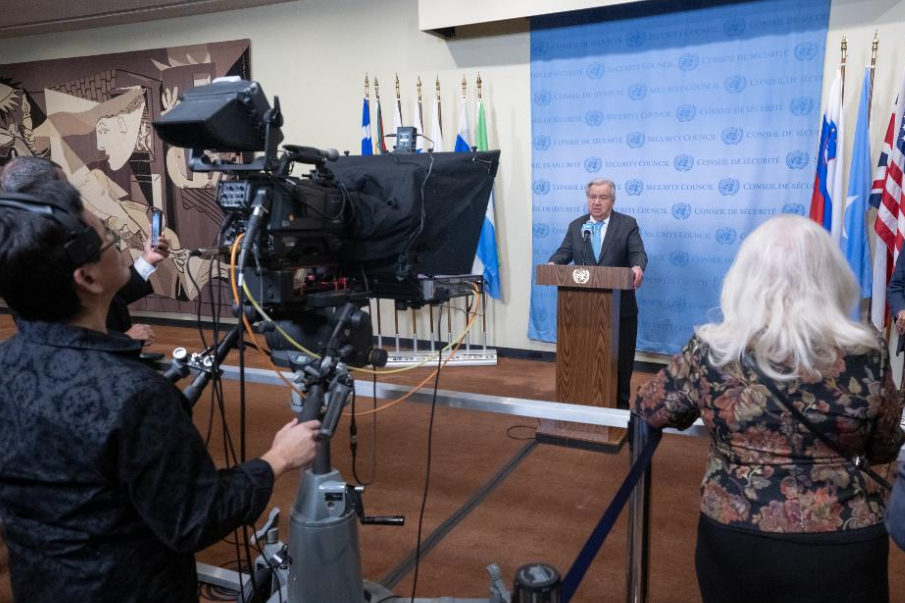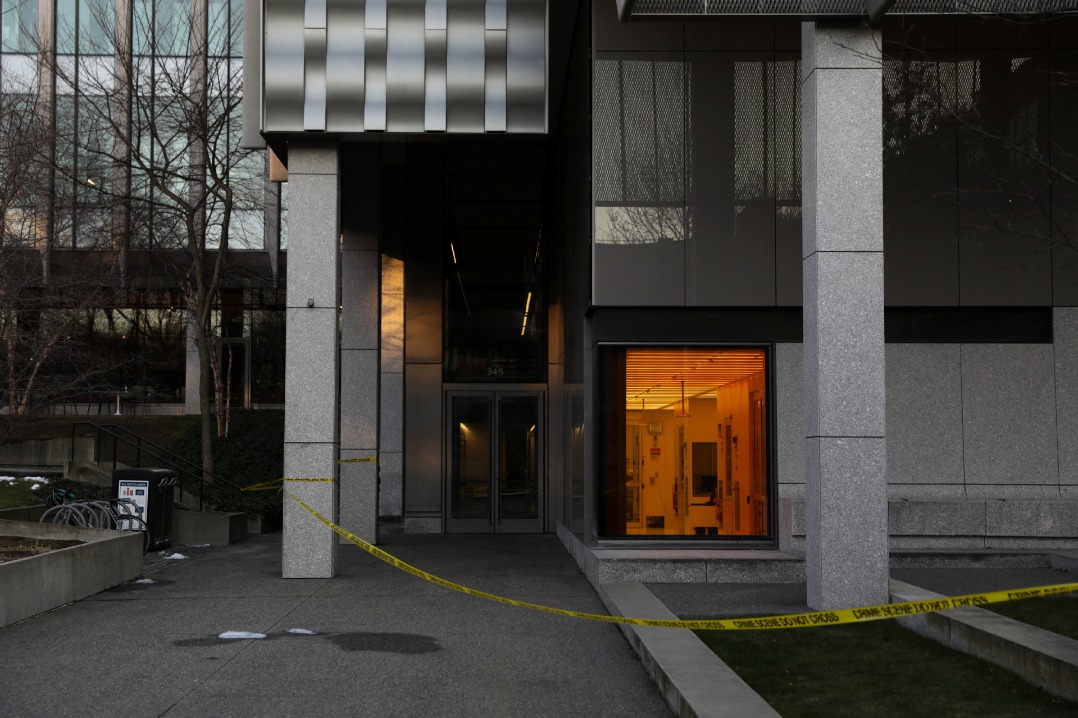Coronavirus was in US in late 2019, study finds

A United States government study published on Tuesday suggests that the coronavirus was infecting people in the US before causing a deadly outbreak in the Chinese city of Wuhan.
The outbreak hit Wuhan, Hubei province in late 2019. Officially, the first US infection to be identified was a Washington state man who returned from Wuhan on Jan 15 that year and sought help at a clinic on Jan 19.
The study's results suggest that the virus may have been circulating in Illinois, for example, as early as Dec 24, 2019, although the first case in that state was confirmed a month later.
The study was published online by the journal Clinical Infectious Diseases and was conducted by a team including researchers at the National Institutes of Health. They analyzed blood samples from more than 24,000 people across the country. The samples were collected in the first three months of 2020 as part of a long-term NIH research program called All of Us that seeks to track 1 million people in the US over the years to study their health.

The researchers found evidence of infection in just nine out of 24,079 participants whose blood samples were taken between Jan 2, 2020, and March 18, 2020, for the NIH research program. Seven of the samples came from blood donated before the date of the first diagnosis in their states-Illinois, Wisconsin, Pennsylvania, Mississippi and Massachusetts.
At least a couple of the participants had mild symptoms. One of those in Illinois was infected as early as Nov 24, said Keri Althoff, an associate professor at the Johns Hopkins Bloomberg School of Public Health and the study's lead author.
Chinese Foreign Ministry spokesman Zhao Lijian said at the daily news briefing on Wednesday that the study proves once again that tracing the origin of the virus is a complicated scientific issue involving different countries and places.
He said it should be handled by collective efforts of global scientists to better prevent potential risks in the future and to protect the safety and health of people across the world.
According to Zhao, many health experts and media outlets from various countries have pointed out that the virus broke out in many places and regions.
The international community should respect this reality, he added, and research in the next phase of World Health Organization-led origin tracing should be based on a global vision and conducted in various places, rather than being limited to a certain region.
"We hope other countries can act like China to conduct cooperation with the WHO on virus origin-tracing study with an open, transparent and scientific attitude, so as to make due contribution to boosting global anti-virus cooperation and saving more lives," he said.
The NIH researchers haven't yet followed up with study participants to see if any had traveled outside the US before they were infected. But they found that the seven whose samples came from blood donated before the date of the first diagnosis in their states didn't live in or near New York City or Seattle, where the first wave of US cases were concentrated.
Researchers at the NIH and studies by the US Centers for Disease Control and Prevention used multiple types of tests to minimize false positive results. Some experts said it is still possible that the 2019 positive samples were infections by other coronaviruses and not the pandemic strain.
Some experts also said the new study is flawed because the researchers didn't have travel information for any of the patients, and such information could have helped explain the test results.
"This is an interesting paper because it raises the idea that everyone thinks is true, that there were infections that were going undiagnosed," Scott Hensley, an immunologist at the University of Pennsylvania, told The New York Times.
However, the small number of samples that tested positive made it difficult to be sure that they were true cases of infection and not just a methodological error, Hensley said.
Josh Denny, chief executive of the All of Us program, told the Times that "it's still very possible that some of them might be false positives", but that all of them being false positives "seems pretty unlikely with what we've done".
William Hanage, a Harvard University expert on disease dynamics, told The Associated Press, "While it is entirely plausible that the virus was introduced into the US much earlier than is usually appreciated, it does not mean that this is necessarily strong enough evidence to change how we're thinking about this."
Late last year, researchers at the CDC and the American Red Cross reported that there could have been isolated cases of COVID-19 in the US as early as mid-December 2019. The researchers said they found evidence of infection in a young man who gave blood in Northern California at that time, and in an individual who donated in Connecticut on Jan 10, 2020.
Another study published in the scientific journal Nature Communications earlier this month found evidence of sporadic coronavirus cases in New York City a month before the first officially documented case and the city's pandemic wave in March 2020.
Natalie Thornburg, the principal investigator of the CDC's respiratory virus immunology team, told AP: "There was probably very rare and sporadic cases here earlier than we were aware of."
Althoff, the study's lead author, said, "It helps us understand a little bit more about the geographic spread of where the virus was in those very early days of the US epidemic."
Zhao Jia and Yang Ran in Beijing contributed to this story.

































